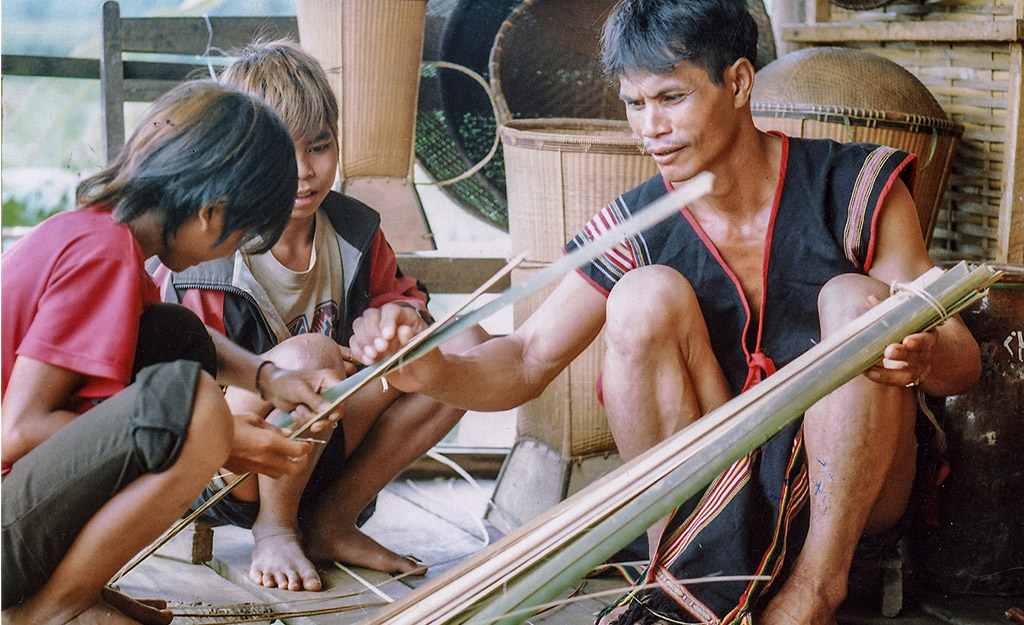Administration Officer, Institute of Indigenous Language and Culture
Knowledge is the foundation of indigenous cultures. As an expression of a given culture, it establishes relationships among an indigenous community with respect to its ancestral territory. The concept of knowledge or traditional knowledge is closely related to intangible cultural heritage. Intangible cultural heritage shapes the spirit of a culture, and central to its promotion and protection, is the revitalization and safeguarding of knowledge and cultural systems.
Indigenous Fijians are unique because they are born into very particular social roles which tend to hold specific responsibilities. Responsibilities of a family would include the transmission of special knowledge and skills that have been passed down from generation to generation. Intangible characteristics of the Fijian culture are mainly unrecorded such as indigenous customs, language, dances, traditional etiquette, and are more commonly performed through oral or visual means. Its preservation rests fundamentally on continuous usage and observance. Given the onset of a dominant global culture, with the combined influence of a non-conducive cosmopolitan livelihood, an apathetic youthful population, and emphasis on economic development, intangible heritage is in a precariously desperate position as it is continually threatened and exploited for economic gain.
The establishment of a National Inventory for Traditional Knowledge and Expressions of Culture and its Subsequent Protection was initiated with the following issues in mind:
- preservation and safeguarding of tangible and intangible cultural heritage
- promotion of the value of cultural diversity
- respect for cultural rights
- promotion of tradition-based creativity and innovation as ingredients of sustainable economic development
The Cultural Mapping Program began in 2004 after the Fijian government decided to adopt the regional model legislation that was developed by a group of eminent legal and cultural experts in the Pacific region. The decision to develop a regional model legislation to facilitate the protection of Traditional Knowledge and the Expressions of Culture was reached in a Trade Ministers meeting of Pacific Island States in Noumea, New Caledonia, in 2003. The Institute of Indigenous Language and Culture of the Ministry of Indigenous Affairs was then mandated by a decision from the government cabinet in September 2003, to be responsible for the development of Fiji’s legislation on Traditional Knowledge and Expressions of Culture.
The Cultural Mapping program, which involves the collection, recording, and documentation of indigenous tangible and intangible cultural heritage in all fourteen provinces of Fiji, is the ICH Inventory-making component that forms the foundation for the model law that is being developed. It has been noted that indigenous Fijians do not have an inventory that properly documents the aspects of their intangible cultural heritage, and the only medium of transmission is through verbal and observational activities performed by elders. Due to the changing times and the advent of technological innovation, the world has been led to endure a significant loss of ICH and the changing perception of younger generations regarding their culture.
The first batch of researchers who had a combination of fieldwork experience and traditional iTaukei protocols were recruited in May 2005 and underwent an intensive training workshop that was funded by UNESCO. In collaboration with other stakeholders and experts, a cultural research framework was developed and piloted before finalizing the research outline which was to be adopted throughout all the provinces of Fiji.
Prior to the data collection stage of this project, an awareness raising campaign commenced in the proposed sites where piloting took place. Provincial council members responsible for the cultural locales piloted, were briefed on the purpose and objectives of the visits accordingly; and their assistance was also rendered in the promulgation of the entire process to the grassroots community living in villages. Since then, the theme of awareness raising is used to formally spread the ‘positive news’ of a visit and to seek villagers consent for research to be undertaken in their respective localities.
In 2005 a database system was specifically developed and launched for the project to facilitate the input of final data collected from respective villages and provinces. The system has enhanced proper storage of information accumulated from the field and ensures that each cultural expression is filed appropriately. In this way, the data is retrieved easily and efficiently when it needs to be accessed by curators, individuals, and parties with the traditional bearer’s consent. Records entered into the database are based on the domains outlined in the research framework and stored in the following format: text, images (digitized photos), audio recordings and accompanying film footage. Hence, each Fijian village will have entries of their community’s characteristic(s) of ICH in our database.
The institute is focused on efforts for completing the program as early as possible, and it is envisaged that with the current available resources and funding, the program has a strong opportunity to carry on for a prolonged amount of time.







